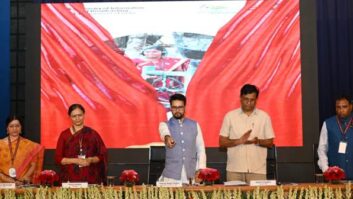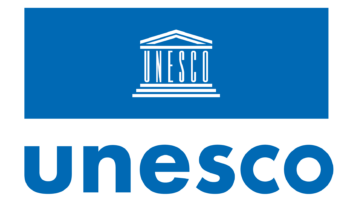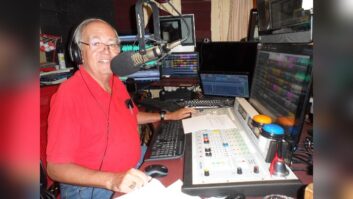
Lorenzo Milam, right, with Bob West and Phil Bannon. Photo by Paul Dorpat courtesy www.krab.fm
The author is membership program director of the National Federation of Community Broadcasters. NFCB commentaries are featured regularly at radioworld.com.
The concept of community radio has a particular history and legacy. While many claim to be the founders, Lorenzo Milam and his band of radio rebels birthed what we have come to associate to be community radio. Milam, the author of “Sex and Broadcasting” and father of 40-odd stations across the United States, championed the volunteer model that many identify with community radio. Fierce independence, roots in youth music subcultures and dedication to radical democracy were some of Milam’s community radio core values.
Almost three generations after Milam’s first station, Seattle’s KRAB, went on the air, it is a safe bet he probably never could have foreseen the expansion of how community radio is defined. While studies indicate that the vast majority of Americans have no idea public media even exists, among noncommercial radio lovers, community radio inspires the sort of loyalty that is rare.
Community radio is almost always signified by the presence of hometown radio hosts. However, it has increasingly turned to what some once looked askance at: nonlocal, syndicated programming and underwriting (criticized by some as commercials in disguise but essential revenue for sustaining the endeavor in many cases). Some are all-volunteer while others have paid staff members that do everything from reporting news to handling business affairs. Although some have programming schedules that are like patchwork quilts of genres, topics, and formats, many feature a particular genre of music or talk prominently.
In short, today’s community radio is very different from that of Lorenzo Milam’s day.
Everything in this world has its purists. There are those who insist that only the best music is on vinyl, or the best films were from years ago. Community radio’s contingent is no exception. It’s a cold world, and media consolidation has put the pressure on noncommercial media fans making them more sensitive to perceived encroachments on their beloved stations. But change is a good thing. Milam himself would probably smile upon community radio’s efforts to grow.
So what exactly is community radio today?
Community radio is an entity committed to media democracy — the ideal that our friends, neighbors and community are knowledgeable, that their stories are inspiring to others, and that they too can learn to be broadcasters. There’s an implicit understanding that it will take some time to nail a smooth pitch, and to be memorably engaging. Community radio trades perfection for an authenticity that comes from volunteering for, participating in and contributing to something meaningful, local and independent.
Where Milam and others imagined community radio as the alternative to other media, what that notion means in today’s multiplatform digital world is a completely different conversation now. Community radio has consequently been pressed to focus on what elements of its originality are most important to keep. For example, the commitment to disparate programming (very much part of the community radio ethos) has become more problematic to pull off. From metal to Spanish-language hip-hop, local environmental talk and children’s shows, community radio is proudly quirky. It is maddening at times to be sure, but that sort of inclusivity has made the sound special to many people. Arguably listeners habits have changed enough that this may no longer be as true.
Community radio’s pedigree is scrappy. This spirit has nourished innovation and adaptation. It is also significantly different in scale. With few to no paid staff, securing resources and dollars has meant that community radio depends on local relationships, its grassroots aesthetic and indomitable ingenuity. Everyone loves an underdog, thus community radio generates goodwill by not giving up despite the media saturated odds.
Years ago, community radio was defined by freeform programming and a strong embrace of the counterculture. As in Milam’s day, community radio now refuses to be pigeonholed We live in an era of rapid change, none of us are immune and neither are the media organizations we depend on. Yet, it is also true that some things don’t really change. Storytelling, and chronicling local voices continues to fascinate and delight listeners. These efforts challenge our conceptions in a commoditized world and reconnect us with an experience of being citizens first, not consumers. That experience offers hope to many and strengthens the social fabric of our communities.












